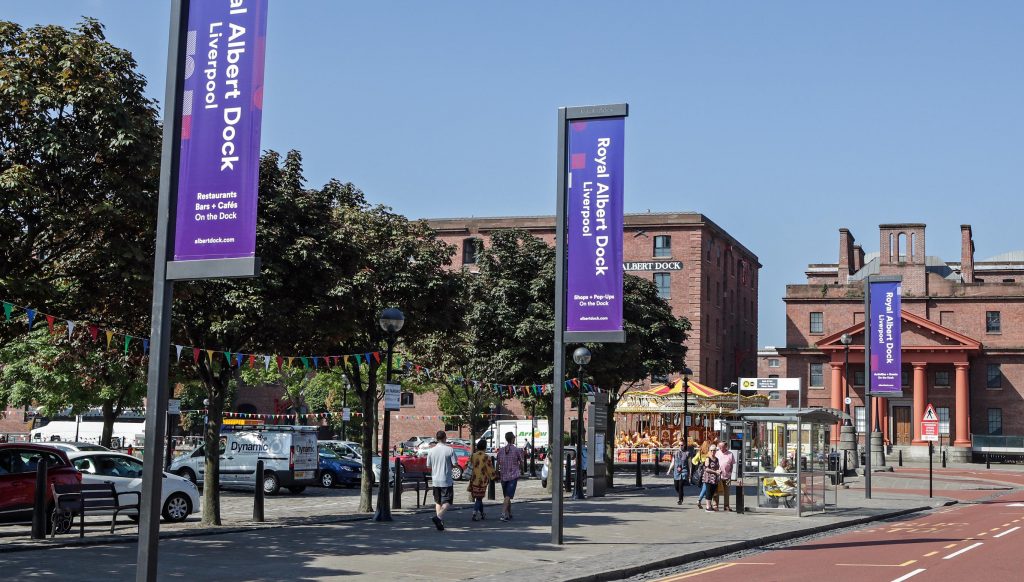History
Iconic in style; immense in ambition. Liverpool’s docks dominated global trade in the 19th century. To this day, the Mersey continues to play a central role in the city’s cultural life, with Royal Albert Dock forming an integral part of the city’s iconic waterfront.
Iconic in style; immense in ambition.
Liverpool’s docks dominated global trade by the early 19th century. When it opened in 1846, Albert Dock changed the way the docks worked here forever. Its warehouses were fireproof and secure; traders could do deals before their import taxes were due; hydraulic cranes hauled heavy cargoes across the flagstones. The speed with which ships unloaded and turned around was cut in half.
Its serene waters stretched the size of three football pitches, and construction cost the equivalent of £41 million today. From maritime to the arts, the Mersey has always played a central role in the city’s cultural life, and the Dock’s vast size stamped its imprint on the waterfront we know and love.

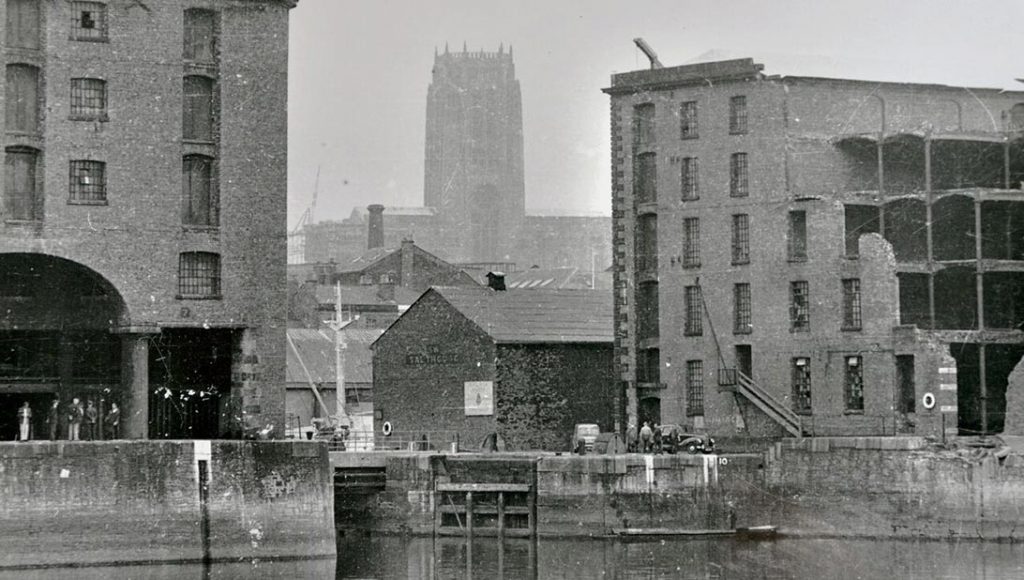
1952 Making the grade
Post-war, the Dock is awarded Grade I listed status, and is now the largest single collection of Grade I listed buildings anywhere in the country. Its iconic cast iron columns measure four feet in diameter, and 25 feet high; its five blocks of five-storey warehouses are built from more than 23 million bricks.
1972 Silent nights
The silting of the Albert Dock begins as the entire South Docks complex is shuttered and silenced. Containerisation moves the city’s dock focus north towards Seaforth, leaving its pioneering spirit in need of a new purpose…
1976 Conserve and protect
Liverpool City Council decrees the Albert Dock a Conservation Area, in order to preserve its unique architectural and historic interest. In both 1960 and 1966 the Mersey Docks and Harbour Board had considered demolishing it; its new status assures its future.


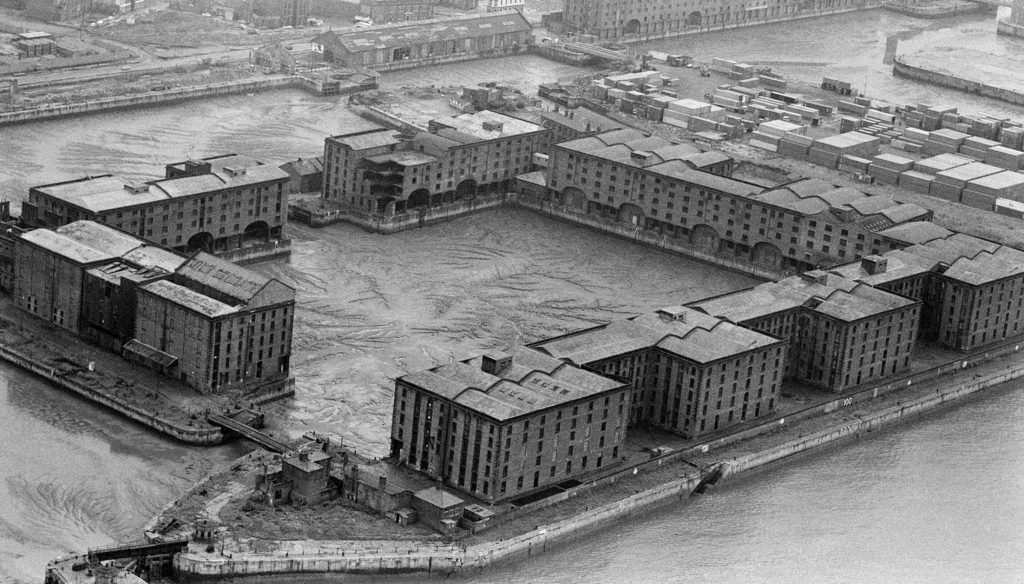
1980
Albert Dock full of silt
Unloved prior to re-development in the 1980s
1981 First steps
By 1981, the entire Albert Dock complex is abandoned. The Merseyside Development Corporation is set up with a mission to regenerate Liverpool’s waterfront and docks. In 1982 the Arrowcroft Group put forward to the MDC its ambitious vision to regenerate the abandoned complex and develop a mix of commercial, leisure and residential uses. Through its subsidiary, The Albert Dock Company, Arrowcroft project managed the renovation of the estate’s infrastructure and then invested in excess of £100m to develop the various uses that exist today. In partnership with the MDC, Arrowcroft formed a management company, Gower Street Estates, to manage and maintain the external areas. Arrowcroft continued to own most of the commercial elements for 33 years until 2016 when it sold its investment to a substantial UK pension fund.
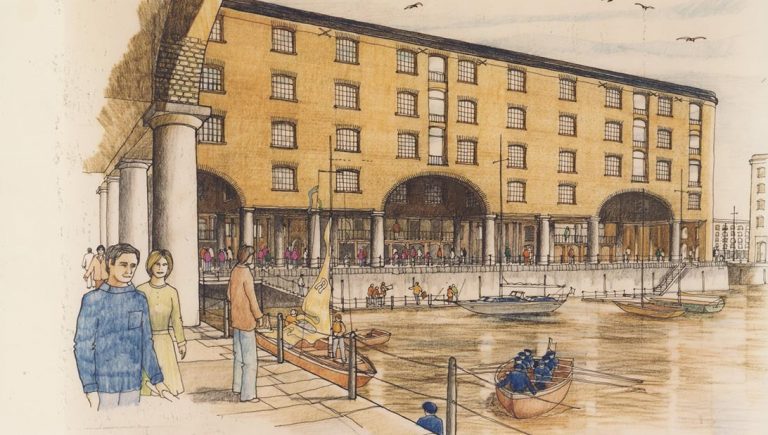
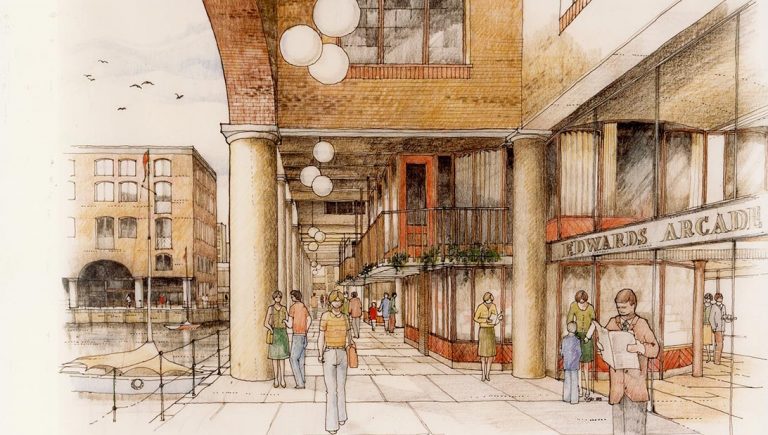
1986 Today’s Dock
Merseyside Maritime Museum opens in a warehouse formerly used to store tea, silk, sugar and spirits. The new museum is the first public building to open at the Dock, starting the renaissance of the waterfront we know today. It celebrates and examines the city’s rich – though sometimes difficult – maritime history, including its relationship with the Titanic, the new International Slavery Museum and the Border Force’s national museum, Seized!
1988 Royal Recognition
The Dock’s distinctive columns are broadcast into homes across the country by the groundbreaking new ITV show, This Morning. Judy Finnegan and Richard Madeley change the face of daytime television as they look out over the Dock and its floating weather map. HRH the Prince of Wales comes to Liverpool to reopen the fully-refurbished Dock, as Tate Liverpool opens.
1998 Re-emergence
Gower Street Estates takes over administration of the Dock. It supports its development over the next 20 years, investing in its public spaces, introducing free wi-fi and starting a vibrant seasonal events programme that will see it become the North West’s most visited free tourist attraction. The waterfront again becomes central to city life in Liverpool.
2004 World Heritage status
The Dock becomes one of the centrepieces – with the Pier Head’s Three Graces – of Liverpool’s UNESCO World Heritage status. Awarded the accolade as a mercantile maritime city, it remains an example of one of the world’s major trading centres in the 18th and 19th centuries. Albert Dock was central to Liverpool’s role in the growth of the British Empire, migration to America, and a pioneer of dock technology, transport and port management.
2013 Silver celebrations
25 years have passed since the Dock’s regeneration and it sits at the forefront of Liverpool’s cultural consciousness once again. It is home to cultural giants including Tate Liverpool, The Beatles Story, Merseyside Maritime Museum and International Slavery Museum, alongside a kaleidoscope of shops, bars and restaurants. The Making History campaign, featuring an audio tour and online story-telling archive, is launched to celebrate its place in Liverpool’s economic, cultural and social history.

2017
The stage is set
More than six million visitors a year now flock to enjoy the Albert Dock’s rich variety. New owner Aberdeen Asset Management announces a vision for the future of the Dock’s retail and leisure offer, describing it as a ‘one of a kind destination’. The stage is set…
2018 By Royal approval
At just 172 years young, the Dock seals Royal status, in recognition of its pivotal role in the city’s fortunes. As it readies itself for a year of celebration in 2021, marking 175 years since its opening, Peter Woods, High Sheriff of Merseyside, hands over official notice of its Royal status.
